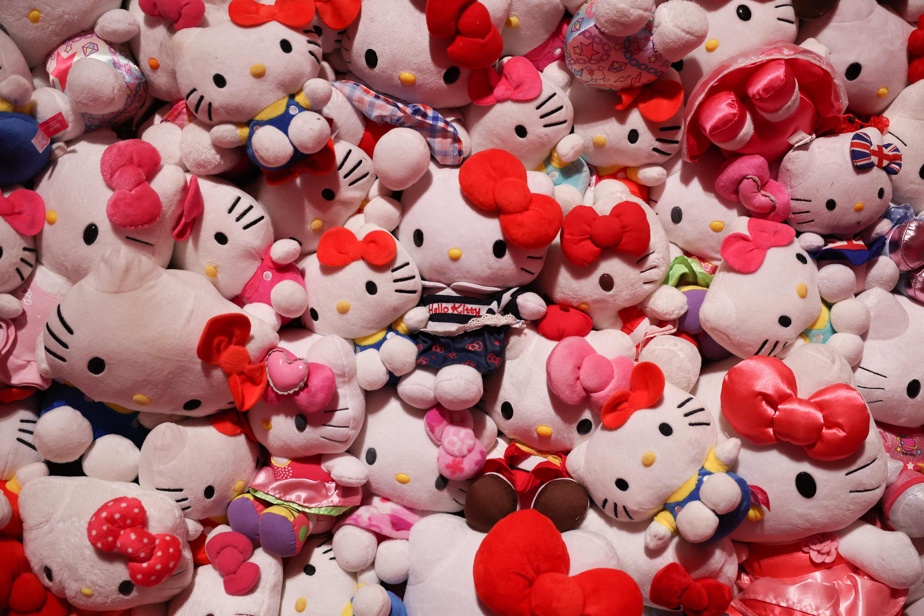(London) From cats to cuddly toys to emojis, the exhibition Cutewhich opens Thursday at Somerset House in London, invites us to reflect on the influence of “cute” in our daily lives, a concept more rich and complex than it seems at first glance.
On the eve of the opening to the public, the art center located on the banks of the Thames welcomed the first visitors to the exhibition: influencers in Japanese schoolgirl uniforms, Hello Kitty dresses or Pikachu hats, which lend themselves in the photo game for their thousands of subscribers.
With works of art but also numerous clips, video games or memes shared on social networks, the London museum, dressed in pop colors, is betting on transposing within its walls a mainly virtual culture, which has spread around the world with the explosion of the Internet.
The first room Cute is entirely dedicated to cats, internet stars par excellence, and juxtaposes black and white photographs of felines dating from the 19the with portraits of futuristic rainbow kittens created using artificial intelligence.
A little further, a collage of curly cherubs from the Renaissance, the first “cute babies” in the history of art, mixes with plush toys, mangas and emblematic figurines of “kawaii” culture, which appeared in the 20th century.e century in Japan, and which translates to “cute” or “adorable”.
This concept of “cute” is so vast that even Claire Catterall, the curator of the exhibition, struggles to provide a definition: “it is slippery, very delicate to define, and that is what makes it interesting, because it can be a multitude of things at once,” she tells AFP.
In the sections separated by arches in the shape of a cat or a rainbow, contemporary works coexist with commercial products – such as the famous Tamagochi or Sylvanian Families toys – proof that “cute” is, above all, a billion-dollar industry.
The exhibition Cute is also sponsored by the Japanese company Sanrio, which markets worldwide products derived from the famous Hello Kitty kitten, created almost 50 years ago.
” Take seriously “
Some visitors pass under an arch bearing the image of the character, with dozens of soft toys of all colors covering the walls, and wiggle under the disco ball of the Hello Kitty discotheque.
“Cute culture and capitalism are closely linked, which sometimes makes people very uncomfortable,” emphasizes Claire Catterall, but at the same time, “what has been generated in these structures can also be what which disturbs them the most.
After having long been mocked or adopted ironically, this aesthetic and its dress codes are now popular with many young people, because they allow them to “exist outside the norms”, for women and queer people in particular. , she adds.
“This exhibition shows that it is something that must be taken seriously and which can tell us a lot about ourselves and the world around us,” believes the curator.
Cute also briefly highlights a more political dimension of “cute”, in a section where we find a fuchsia pink hood of the Russian feminist punk rock group Pussy Riot, known for its actions against President Vladimir Putin in provocative pop outfits .
While “immersive” exhibitions and museums are multiplying all over the world, Cuteopen to the public until April 4, also focuses on interactivity.
Spectators can test Japanese video games there. vintage in an arcade or to relax during a “sleepover” in a huge teenager’s bedroom with beanbags and pop music, created by British artist Hannah Diamond.
“It’s exuberant, exciting, stimulating […] “cute” is not just an aesthetic, it’s a feeling: we wanted to create a place where people can come and dance, feel good,” emphasizes Claire Catterall, far from the anxieties and bad news of everyday life.
